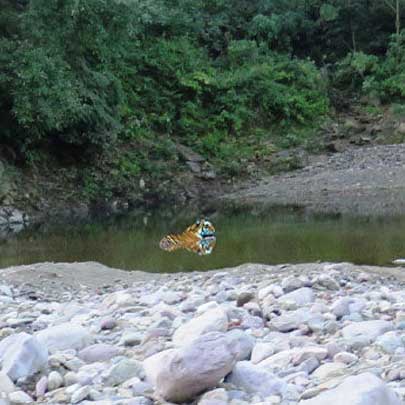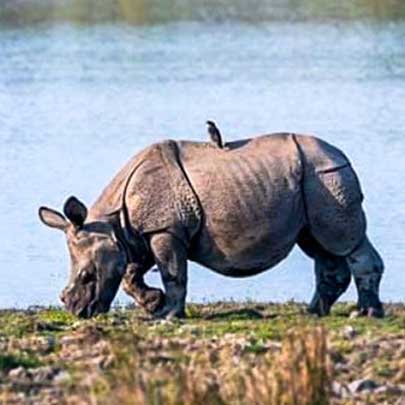Exploring India’s Lesser-Known Wildlife Sanctuaries: Hidden Gems for True Nature Lovers
Exploring India’s Lesser-Known
Wildlife Sanctuaries: Hidden Gems for
True Nature Lovers
When people think of wildlife tourism in India, iconic names like Jim Corbett, Ranthambore, or Kanha National Park usually top the list. But beyond these famous parks, India is home to an incredible range of lesser-known wildlife sanctuaries that offer raw, untouched beauty, thriving biodiversity, and immersive eco-tourism experiences.
These unexplored wildlife sanctuaries are perfect for travelers seeking solitude, authentic nature interactions, and a break from the crowded tourist trails. Let’s delve into some of India’s hidden gems and learn how Wildlense Eco Foundation and Wildlense Wild Retreat are helping promote sustainable wildlife tourism and conservation.
Why Explore Lesser-Known Wildlife Sanctuaries?

Before we begin our list, here’s why exploring these lesser-known sanctuaries is worth your while:
-
Less Crowded: No waiting in long queues or jostling for safari seats.
-
Richer Wildlife Experiences: Animals are less accustomed to humans, making encounters feel more authentic.
-
Eco-Friendly: Smaller footfalls often mean more sustainable tourism.
-
Support for Local Communities: Many offbeat sanctuaries are maintained with community participation.
1. Pilibhit Tiger Reserve, Uttar Pradesh – Where Conservation Meets Tranquility

Nestled in the Terai region of Uttar Pradesh, Pilibhit Tiger Reserve is one of India’s most promising and yet relatively unknown tiger reserves. Declared a tiger reserve in 2008, Pilibhit is characterized by its dense sal forests, grasslands, and rich river ecosystems, supporting a vibrant mix of tigers, leopards, elephants, and over 300 species of birds.
Just 2 km from the Mahof Gate of the reserve lies Wildlense Wild Retreat, a nature-inspired eco-stay that blends comfort with sustainability. The retreat is supported by the Wildlense Eco Foundation, a non-profit organization focused on wildlife conservation, habitat protection, and environmental education.
What Makes Pilibhit Special?
-
Recognized under the TX2 global tiger recovery program
-
One of the few places in India where tiger sightings are rising steadily
-
Excellent location for bird watchers, especially during migratory seasons
-
Eco-tourism initiatives that promote local employment and education
Best Time to Visit: November to April
2. Tamor Pingla Wildlife Sanctuary, Chhattisgarh – The Soul of Central India
If you’re in search of unexplored wildlife sanctuaries in India, Tamor Pingla should top your list. Located in the Surajpur district of Chhattisgarh, this sanctuary boasts dense forests, winding rivers, and elusive wildlife like Indian sloth bears, leopards, hyenas, and a range of herbivores.
The sanctuary is part of the Sarguja Elephant Reserve, contributing significantly to India’s elephant conservation movement. With fewer tourists and excellent forest cover, it provides an undisturbed environment for wildlife photography and research.
Tip: Due to the remote nature of the region, it’s best to visit with local guides or NGOs involved in conservation.
3. Satkosia Tiger Reserve, Odisha – Where Gharials Glide and Tigers Roam
Located along the Mahanadi River gorge, Satkosia Tiger Reserve in Odisha is a paradise for those who love riverine ecosystems. It’s home to the critically endangered gharial, mugger crocodiles, elephants, and a few tigers.
What makes Satkosia unique is its beautiful topography—a perfect blend of tropical forests, river valleys, and steep gorges. Despite its potential, tourism here remains surprisingly low, making it ideal for peaceful, nature-centric travel.
Activities: Jungle safaris, bird watching, and boat rides along the river
Best Time to Visit: October to March
4. Bhoramdeo Wildlife Sanctuary, Chhattisgarh – The Land of Myths and Monuments
Adjacent to the famous Bhoramdeo Temple, this sanctuary offers an enchanting mix of heritage and wilderness. The region is part of the Maikal hill range and hosts a wide variety of flora and fauna, including gaur (Indian bison), sambhar deer, leopards, and even the occasional tiger.
Perfect for travelers who want to combine wildlife tourism with culture and history, Bhoramdeo is not just a sanctuary but a journey through India’s natural and spiritual heritage.
5. Singalila National Park, West Bengal – A High-Altitude Biodiversity Hotspot
Tucked away in the Eastern Himalayas, Singalila National Park is famed for being one of the few places in India where you can spot the endangered red panda. Located on the Singalila Ridge, this park also offers stunning views of the Kanchenjunga and Everest peaks.
What truly sets it apart is its unique elevation range (7000–12000 feet) and alpine vegetation, which support an entirely different ecosystem compared to central and southern Indian sanctuaries.
Activities: Trekking, camping, red panda tracking with forest guides
Ideal for: Adventure lovers, photographers, Himalayan wildlife enthusiasts
Wildlense Eco Foundation: A Force for Change in Wildlife Conservation

In the realm of wildlife conservation, Wildlense Eco Foundation has carved a niche by focusing on community-based conservation, environmental education, and eco-tourism development. Operating near the Pilibhit Tiger Reserve, the foundation works hand-in-hand with forest departments and local villages to protect habitats and empower communities.
Their programs include:
-
Habitat restoration projects
-
Youth awareness workshops
-
Support for anti-poaching patrols
-
Eco-friendly tourism training
The foundation is also associated with Wildlense Wild Retreat, a model eco-lodge that demonstrates how hospitality can coexist with conservation.
Wildlense Wild Retreat: Experience Nature, Sustainably

Located just minutes from the Pilibhit Tiger Reserve, Wildlense Wild Retreat is more than a stay—it's an immersive experience. The retreat features eco-conscious cottages, organic meals, guided safaris, and community-led cultural evenings.
What sets the retreat apart?
-
Built using locally sourced materials
-
Operated with zero single-use plastics
-
Offers guided nature walks and forest safaris
-
Revenue supports Wildlense Eco Foundation's conservation projects
Whether you're a wildlife photographer, researcher, or weekend explorer, this retreat provides a meaningful way to experience the forest.
Final Thoughts: Choose the Road Less Travelled
India’s lesser-known wildlife sanctuaries are more than just quiet alternatives—they are crucial habitats, biodiversity hotspots, and incredible travel experiences waiting to be discovered.
By choosing offbeat destinations like Pilibhit, Tamor Pingla, or Singalila, you're not just escaping the crowds—you’re contributing to a more sustainable and inclusive form of wildlife tourism.
If you're passionate about conservation, consider supporting or volunteering with organizations like Wildlense Eco Foundation, or stay at places like Wildlense Wild Retreat to make your journey meaningful.
📌 Quick Links:
-
Pilibhit Tiger Reserve Info: wildlense.com/best-tour-package-pilibhit-tiger-reserve
-
Wildlense Eco Foundation: www.wildlense.com
-
Book Your Stay at Wildlense Wild Retreat: Retreat Booking Page
Plan mindfully. Travel consciously. And let India’s untamed beauty surprise you. 🌿🐅












































































